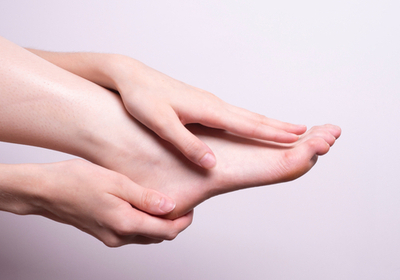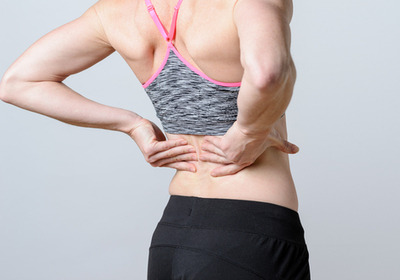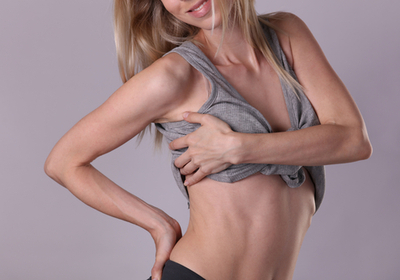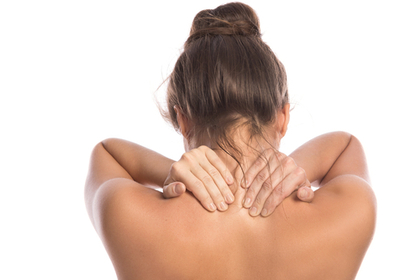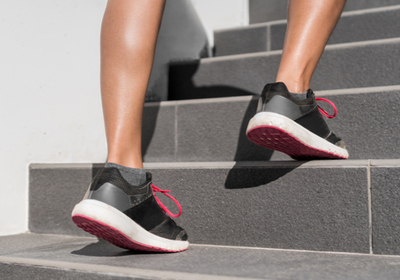VIDEO
Superman, Side Elbow Plank Leg Lifts, Inner Thigh Lifts
- Core
- Back
- Legs
- Trapezius
- Hips
Level:Intermediate
Trainer:Megan Green
Equipment:Fitness Mat
Superman, Side Elbow Plank Leg Lifts, Inner Thigh Lifts
- Core
- Back
- Legs
- Trapezius
- Hips
Level:Intermediate
Trainer:Megan Green
Equipment:Fitness Mat
1.Lay on your belly with your arms and legs fully extended. Lift our arms and legs off the floor and hold on this position for 2 seconds. Repeat. 2.Start from a side-plank position with your elbow on the mat and your upper leg on the chair. Holding the bodyweight on your upper leg and elbow, begin lifting your lower leg up and down, contracting your abs. 3.Lay on your side with your bottom leg extended and your top leg over. Lift the top leg and lower it back down without touching the floor.
save to ...
RECOMMENDED FOR YOU
- Core
- Legs
- Abs
Duaration: 00:14
save to playlist
- Core
- Back
- Legs
Duaration: 00:15
save to playlist
- Triceps
- Shoulders
- Gluteus
Duaration: 00:15
save to playlist
- Core
- Arms
- Back
Duaration: 00:15
save to playlist
- Back
- Biceps
- Shoulders
Duaration: 00:15
save to playlist
- Core
- Arms
- Legs
Duaration: 00:15
save to playlist
- Core
- Arms
- Legs
Duaration: 00:15
save to playlist
- Core
- Arms
- Legs
Duaration: 00:15
save to playlist
- Core
- Arms
- Back
Duaration: 00:15
save to playlist
- Core
- Arms
- Back
Duaration: 00:15
save to playlist
- Arms
- Back
- Legs
Duaration: 00:15
save to playlist
- Biceps
- Triceps
- Trapezius
Duaration: 00:14
save to playlist
- Core
- Arms
- Legs
Duaration: 00:15
save to playlist
- Core
- Arms
- Legs
Duaration: 00:15
save to playlist
- Arms
- Legs
- Abs
Duaration: 00:15
save to playlist
Blog
Sooner or later, every athlete gets injured, especially runners, and most injuries occur in the ankle joint, the medial and lateral parts of the foot. What are the possible causes? Too much training, weight, and the distance you are running. It may be too hard on your feet because we have been walking in shoes all our lives and most of us lead a 'lazy life' and that's why your ankles and feet don't develop properly. So if one day you just start running a lot of miles, your foot muscles will be overloaded leading to all kinds of injuries and inflammation.
Obviously, you need to train your feet in order to be able to do any exercise safely and without any impact on your health. So, let's take a quick look at some exercises for your feet muscles.
Warm-up exercises
Sit down and focus on your toes. Lift your big toe up. At the same time, press the remaining 4 toes toward the ground. Hold this position for 5 seconds. Now hold your thumb and lift the other 4 toes. Hold for 5 seconds. Repeat 10 times for each foot.
Knot
Take a medium-thick rope, about one meter long. Put the rope on the floor and sit on a chair in front of it. Use your toes to clasp the ends of the rope. Try to tie a knot. Do the exercise for 5 minutes. Note: This is a difficult exercise.
Knee Writing
Place a piece of paper on the floor. Sit in a chair and put one foot on the paper. Hold the pen with your thumb and index finger. Try to write any word, such as 'mom'. Do this exercise for at least 3-5 minutes.
Note: This exercise is very difficult. Do the exercise for 3-4 minutes.
Rolling Style
Sit in a chair keeping your back straight. Place a tennis ball under your feet. Roll the ball back and forth. Don't forget to keep your back straight. Do this exercise for 2-3 minutes. Repeat with the other leg.
Towel
Sit on a chair and place a towel under your feet. Grasp the towel with your toes. Your heels should be flat on the floor. Bend and unclench your toes and slowly pull the towel toward you. Switch feet and repeat the exercise. Perform 2 sets of 10 repetitions. You can perform more if you want.
Toe Lift
This exercise can be performed anywhere, even in the office when you are working at your desk. Sit with your feet flat on the floor. Raise your toes so that the arch of your foot is curved. Slowly lower your toes, keeping the arch of your foot so that you feel the tension in the arch of your foot. Hold this position for 5 seconds, then relax your foot. Repeat for each foot 5 times.
Having strong legs will allow you to perform many exercises safely, so don't underestimate leg training and do it at least a few times a week.
Read more
Lower back muscles easily get sore and injured as well as are rather challenging to train. At the same time, these muscles are essential for one’s back health. So what is the anatomy of lower back muscles, and how to develop them? This is exactly what we are going to talk about in this article.
Lower Back Muscles: Anatomy & Functions
The lower back muscle group consists of several muscles, which are multifidus muscles, erector spinae, spinalis, and latissimus dorsi. These muscles are essential for posture, moving, and even involved in the walking process. In fact, lower back muscles are super important for normal functioning, and those people who have suffered any lower back injuries know it. In addition to that, these muscles are actively involved in the special moves in certain sports like gymnastics as well as in various dance styles. So even though these muscles seem to be small and unimportant, yet they actually have lots of functions.
Why Is It Important to Develop Your Lower Back Muscles?
Many people believe that, in terms of the spine, you only need to work on the trapezius and upper back since these muscles are essential for the right posture. Certainly, it’s not exactly true. In fact, you have to work on your entire spine to harmoniously develop all the muscles of your back. Plus, the lower back easily gets injured, especially if you lift something heavy, but if you have strong and developed lower back muscles, you can reduce the risks of having such an injury. So no matter if you are an office worker or a professional athlete or dancer, you need to work on your lower back muscles.
Workouts for the Lower Back Muscles
So how can you make your lower back muscles stronger and therefore lower your chances of getting a nasty injury? Well, here are some exercises you might want to try:
Rack pull
Harvesting apples
Bent over row
Side stretching
Barbell good morning
Belly roll
Back extension
Side plank
Superman
Glute hamstring raise
These simple exercises will no doubt help you make your lower back stronger and healthier, so do not hesitate and give them a try.
Final Thoughts
Developed lower back muscles are not only needed for professional athletes or dancers but also for those people who want to maintain their back health. So make sure to include at least a few lower back workouts into your exercise routine. Trust us, you won’t regret it.
Read more
After the abdominal muscles are prepared, the obliques are the next step. The obliques are several groups of abdominal muscles on either side of the main body. The external obliques are at the top and the internal obliques are at the bottom. Training them with functional exercises includes flexion, twisting, and other rotational movements. In order to properly exercise the lateral muscles, however, it is important to remember that most oblique exercises also involve the other abdominal muscles, especially the medial transverse muscles. Therefore, you need to engage certain areas of the abdominal abs in a conscious manner.
Lateral twists
The basic exercise for the abdominal obliques is the lying lateral twist. Begin with lying on your side with your arm bent at the elbow to support your head. Extend the elbow toward the leg slowly, performing a purposeful contraction of the abdominal obliques.
Prone lateral push-ups
This exercise is fine for developing the neuromuscular links between the abs and the brain. Lying on the back, pull your left elbow in a slow tempo towards the opposite knee. Perform 12-15 reps on each side, and try to achieve a special burning feeling.
Lateral push-ups on a fitness ball
The advantage of this exercise is that you achieve a wide range of motion by bending your body slowly and controlling each movement over the ball. As you lift, feel your side abdominals twist and stretch as you descend. Place your arms behind your neck and do not move them apart.
Cross contacts
Make sure that your legs are straightened up while you are lying on your back. Place your hands on the back of your head and lift your head and shoulder blades slightly. Then do a twisting motion, extending your legs with the opposite arm straight. Perform the same movement for the other side. Repeat at least 20 times.
Lift your hips
Make sure you are lying straight on one side. Your feet should be lying on top of each other and your free arm fixed at the waist. You need to lift your torso so that your body line is completely straight at peak amplitude. At the apex, pause briefly to emphasize the work of the obliques. As you lower your torso, your thighs are only gently touching the ground and the muscles are not fully relaxed.
Developed obliques provide the framework for your abs and make them look amazing, so if you really want to have a great abdomen, you should work both your abs and obliques.
Read more
Trapezius muscles are often underestimated, and many people don’t pay much attention to them while working out. However, it is a huge mistake because these muscles are extremely important for the right posture as well as back health. So in this article, we’ll talk about trapezius muscles and how to develop them.
Why Do I Need to Work on Trapezius Muscles?
The trapezius is a part of the upper back which helps us to maintain the right posture. The muscle group consists of three different parts, which are top, medium, and bottom. Together with the muscles of the neck, the trapezius is responsible for the right posture. The upper part of this muscle is responsible for the rise of the shoulder as well as the ability to lift arms. The lower one - is for lowering shoulders and arms. At the same time, the middle one is needed for blade movement. As you can see, this muscle group is responsible for many basic functions, which is why developing the trapezius muscles is extremely important for everyone, especially for those people who have some problems with their posture.
How Often Should I Do Trapezius Workouts?
Ideally, you have to include at least 2-3 trapezius exercises in each workout session. At the same time, you have to work out 3 times a week. In some cases, it’s better to have 4 training sessions per week. In case you have some issues with your posture and you cannot keep your back straight because your spine muscles (especially trapezius) are weak, we recommend doing at least a few exercises for trapezius muscles every day.
Who Needs Trapezius Exercises the Most?
Of course, everybody needs to straighten their trapezius muscles, but, obviously, some people need it more than others. So who are those people? Well, here is a short list of those you must pay more attention to their trapezius muscles:
Office workers who work long hours at the desk
People who have posture problems and struggle to keep their back straight
Athletes and fitness enthusiasts who lift heavy weights
Boxers, volleyballers, basketballers, and other sportsmen who actively involve their arms in their sports activity
Dancers and gymnasts who need strong and developed back muscles
Do you belong to any of these groups? Then you better start working on your trapezius muscles now.
Best Workouts for Trapezius
Last but not least, we would like to recommend you some trapezius workouts, so here they come:
Shrug
Deadlift
Shoulder blade squeeze
Barbell row
Upright row
Reverse dumbbell flyes
Chin-up
Pull-up
Push-up
Lat-pulldown
Rear delt cable raise
High pulley cable row
Overhead farmer's walk
Y raise
Rope rear delt pull
Wrapping Up
Trapezius muscles are super important for your back health, so no matter what your occupation is or how often you work out, you still need to find at least a few minutes for some exercises for the trapezius.
Read more
Sure, everyone familiar with running knows the importance of strengthening the foot and ankle ligaments. The other thing is that sometimes it's hard to spend 5-10 minutes preparing for ankle exercises: we get dressed, lace up our shoes and run down the street. This is unfortunate. After all, good elastic ligaments can reduce the risk of leg pain. And strong ankle muscles can improve lower back and even shoulder strength when you're running or just walking.
Of course, there are plenty of good exercises to help you strengthen your ankles, so without further ado, let's take a look.
Stretching
Sit on the floor and straighten your leg in front of you. It's important to make sure your big toe, little toe, and heel stay in the same direction as you extend your foot. Only then the muscles will be strengthened and stretched in a balanced manner so that you don't walk and run with your foot falling out or in. While pulling your foot apart, stretch your toes as much as possible, as if you were lengthening them, without tucking them under your feet. Repeat 15 times.
Rolling Pose
From a seated position, place your feet in front of you and bring your feet as close to yourself as possible. Spread your knees and keep your feet together. Keeping your feet in this position, place your hands on the floor, bend your body forward and lift your pelvis off the floor and try to stay in this position for a while. If you feel your potential, you can roll to the left and to the right, touching your feet with the palms of your hands.
Rising and falling Exercise
It is traditionally recommended to do these on a ladder, but doing them slowly on a flat surface will give good results. Raise your toes as high as you can, keeping your heels in the air, then bend your knees so your heels are forward. Place your heel on the floor and then straighten your leg. It is very important to make sure your knees and ankles don't flip or drop.
Dumbbell Squats
Deep squats are good for developing the ankles, and when combined with dumbbells or barbells (if you have trained enough), this exercise is even more effective. Start with dumbbells that you can lift 15 times without dropping to the floor. 2-3 kg is suitable for beginners. Bodybuilders need to lift more weight to develop their leg muscles. Make a deep squat as follows: stand up straight with your feet shoulder-width apart, arms at your sides, holding a dumbbell, or if you are doing the exercise with a barbell, place it in front of your chest or behind your head. Sit down with your knees bent and your hips on the floor. Keeping your back straight, squat down until your thighs are parallel to the floor. Keep your knees straight over your feet at all times and do not extend your knees further than your toes. Return to the starting position. Perform 2 sets of 10-15 squats each.
Lunges
Keeping your torso straight and your shoulders back, step forward and sit until both knees are at a 90-degree angle. Your knees should not protrude over your toes. Do a series of two on each leg and repeat 10 times.
Final Words
Strengthening your ankles is crucial for professional and amateur athletes alike, so whether sports are your life or you're just exercising to stay healthy, in is necessary to work on your ankles.
Read more
SAVE TO ...

